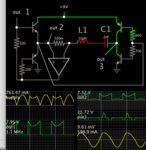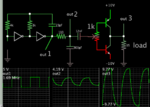marestudio2004
Newbie level 4

Hello folks! I am new in this area in analog domain...
I have piezo ceramic ultrasonic transducer for humidifier...
Specs:
Voltage: 5-12V
Res. Freq: 1,7 MHz
Res. Impedance: <2""> I dont now what is this...
Coupling factor> 52%
Static capacitance: 1800pF
I want to make driver for this transducer as simple as posible. Do you have any idea?
I have piezo ceramic ultrasonic transducer for humidifier...
Specs:
Voltage: 5-12V
Res. Freq: 1,7 MHz
Res. Impedance: <2""> I dont now what is this...
Coupling factor> 52%
Static capacitance: 1800pF
I want to make driver for this transducer as simple as posible. Do you have any idea?


